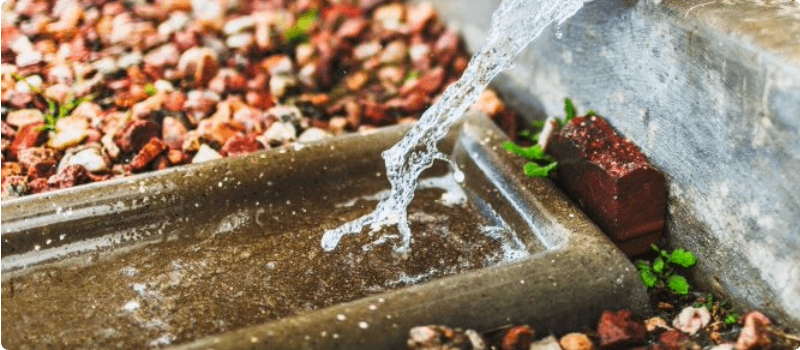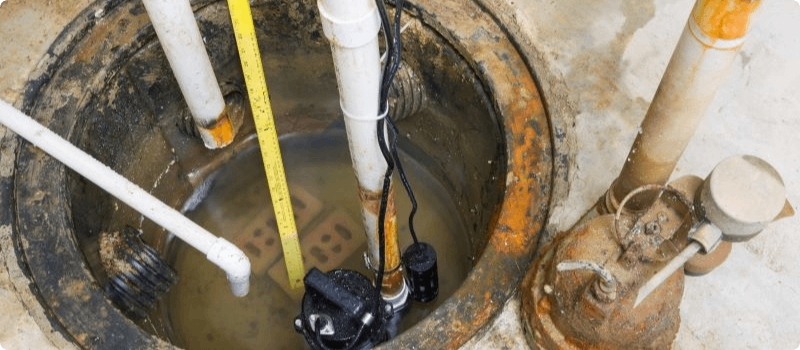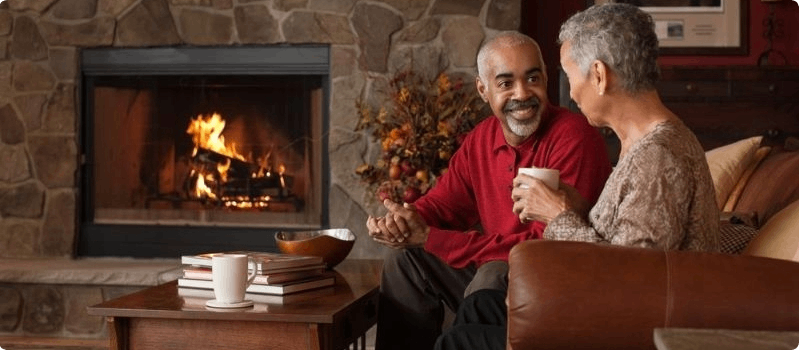Sump pump winter maintenance
Updated December 10, 2018 . AmFam Team
Your sump pump bails you out in the spring, summer and fall when rain threatens to flood your basement. So, when winter and freezing temperatures roll around, do your sump pump and yourself a favor and take care of it. Lucky for you, we’ve gathered a list of handy tips you can use to keep your sump pump in great shape and prevent a frozen sump pump over the winter.

Preventing sump pump freezing during installation
If the external pipe of a sump pump is not installed or prepared correctly during the winter months, it can freeze. Sump pumps prevent water from pooling in basements. To prevent freezing and damage to the pump or home, the pump's pipe can be prepared in several ways for the winter.
How to prevent a sump pump hose from freezing
- Check to make sure your foundation is 10-to-20 feet from the water’s exit point. If your foundation is too close, a freeze-resistant pipe can be attached to add more length if needed.
- Make sure the water exits below the sump pump. The discharge line should slope downward away from the house. Use a freeze-resistant hose, then let gravity prevent standing water from accumulating.
- Make sure the hose is buried 4-to-6 inches below the frost line. The frost line is the depth at which groundwater in soil will freeze. Straw and electrical tape can be used to insulate any exposed portions of the hose.
- Surround the pump hose with a large diameter hose. Using a pipe clamp and some wire to attach the additional hose to the initial hose. This method should be used if burying the hose is not an option.
- Protect your discharge line by adding a discharge line protector. This method is especially useful if your hose has already been buried.
- Consider adding a grade to your yard. The added slope keeps the water buildup away from your foundation. Even without rain or snow, a melt and refreeze can cause a frozen hose if water isn't flowing far enough away from the foundation.
- Install a battery-powered backup. If the electricity goes out, your sump pump still runs properly, preventing water from building up regardless of the weather.
How to prevent sump pump discharge freezing after installation
Installing a sump pump also requires running a discharge line from the pump to the outside. The discharge line drains water away from your home. Water cannot drain if the drainage line freezes because the ice in it prevents it from draining.

Three keys to prevent freezing
- Use a sturdy PVC pipe. The drainage line should be free of dips and curves, with no high or low points. There's a chance that low points can cause pockets that hold water and allow it to freeze. This can interfere with the natural flow of discharge. The best way to prevent this is to use a 2-inch diameter pipe.
- Ensure your property has a gradual slope. The ground around your house should slope downward. That's the easiest way to get water flowing in the right direction with the least amount of effort. This is because the slope helps water drain completely from the line. Water also drains away from the pipe because of the slope. This will prevent freezing inside the pipes or just outside them.
- Install a pop-up drain. The pop-up drain can be installed by drilling three ½ inch holes in the bottom. Place the pop-up drain in a pit filled with five gallons of pea gravel. As a result of these extra holes, excess water drains from the bottom, and water disperses more gradually into gravel. This prevents water from forming puddles or washing away your soil during warmer weather.
How do I know if my sump pump is frozen?
During the winter, discharge pipes can freeze and prevent water from escaping. Whenever water backs up, it can damage your sump pump or your home. Here are two ways to tell if your sump pump has frozen.
- Check that it discharges water by pouring a bucket or two of water into the sump pit. Make sure the pump is working properly and discharges water.
- Check the discharge pipe outside to make sure it's flowing freely. You'll want to make sure everything is free and clear outside the sump pit if the water has been pumped.

How to maintain your sump pump over the winter
You can’t control how much cold this winter will bring or how much snow you’ll get — but you can proactively protect your sump pump from winter’s worst.
Combine these tips with American Family’s sump pump coverage, and you’ll save yourself time and money while keeping your basement dry:
- Remove your sump pump’s discharge hose. When you know your area is about to experience a long period of cold weather, remove the hose connecting your sump pump to the discharge pipe and leave it off until warmer weather returns to prevent a frozen sump pump. If water were to freeze inside the sump pump discharge hose, it’d be unusable until it thaws — and could damage the hose, too.
- Reattach the hose when warmer temperatures return. If you decide to remove your hose for the winter, make sure to reattach it when any period of warmer, thawing weather returns. Your sump pump won’t do you any good if it can’t take the water in its pit back outside!
- Have an extra sump pump discharge hose handy. This tip isn’t just for wintertime — you’re better off having an extra discharge hose on hand during all times of the year in case your primary one freezes or breaks. But if you do have at least two discharge hoses already, you don’t necessarily need to remove the one connected to your sump pump when winter comes. If it freezes, just remove it, attach the spare and let the other one thaw out. That way, you don’t have to be as vigilant with detaching and reattaching the hose as temperatures fluctuate.
- Never unplug your sump pump. While you might think you don’t need your sump pump drain hose over the winter months, you shouldn’t unplug it entirely. If a warm front comes through, snow melts and a rainstorm hits, you might end up with a wet basement all because you forgot to plug your sump pump back in.
- Clear out debris in your sump pump’s pit. Making sure there’s no dirt, gunk, ice, or other debris in your sump pump’s pit will help you avoid clogs in its intake or discharge pipes. If you notice a lot of debris in your pump’s pit, calling a professional to have it cleaned out can pay major dividends in the form of flood prevention.
- Test your pump regularly. Run some water through it during the winter to make sure it’s still functional. When that big snowmelt comes, you’ll be glad you made sure your sump pump is working. And if you removed the sump pump drain hose earlier, make sure to reattach it before you test.
- Make sure your discharge pipe gets rid of water away from your home. Your pump’s discharge pipe’s job is to take the water from the sump pump and dispose of it away from your home. If it’s too close, that water could keep seeping back into your sump, causing your sump pump to run continuously. And your pump will have even more hardship to deal with if that water were to freeze. Where to run sump pump discharge? Experts recommend that water be discharged at least 10 feet away from your home’s foundation.
- Keep your heat on. Your basement can get cold — and your sump pump’s pit and pipes can get even colder. Make sure to keep your heat on and heat your basement normally, as it can prevent any of your home’s pipes from freezing.

Protect your home from damage from a frozen sump pump
Sometimes, despite your best efforts, damage can still occur with a sump line freezing. You work hard to protect your home from the unexpected. That’s why American Family Insurance offers customizable home insurance coverages to make sure it’s protected! Get in touch with your American Family agent and get the coverage and peace of mind you deserve.
This article is for informational purposes only and includes information widely available through different sources and does not afford or guarantee any coverage.

